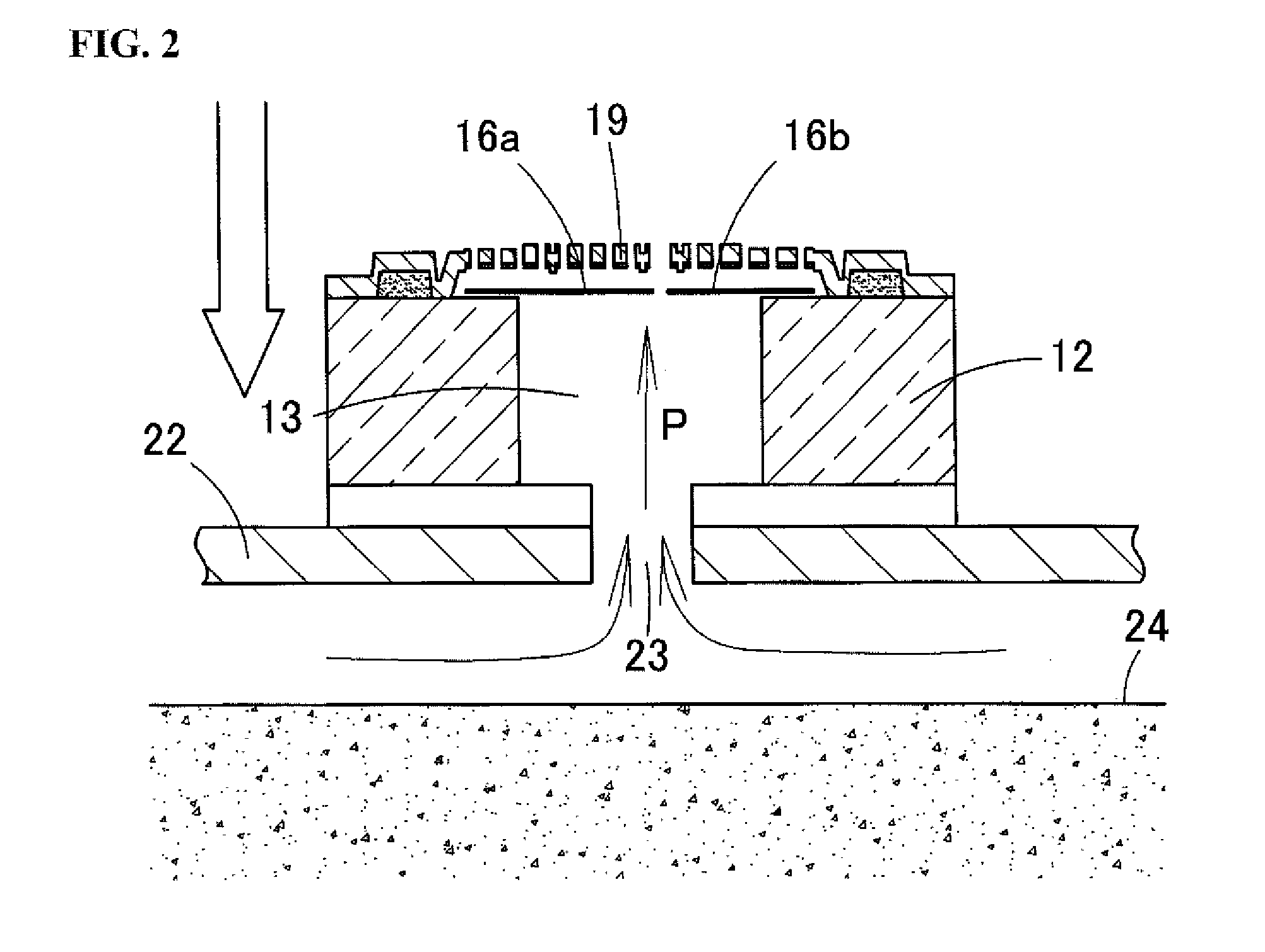Acoustic transducer and microphone
- Summary
- Abstract
- Description
- Claims
- Application Information
AI Technical Summary
Benefits of technology
Problems solved by technology
Method used
Image
Examples
embodiment 1
Variations of Embodiment 1
[0107]A variation of Embodiment 1 of the present invention will be described below with reference to FIGS. 15 to 18. FIG. 15A is a plan view showing an acoustic sensor according to a variation of Embodiment 1 of the present invention, in a state in which the back plate has been removed. In this variation, a circular opening 33c is provided in the substantially central portion of the first diaphragm 33a. When the first diaphragm 33a is not undergoing deformation, the circular regulation portion 37 provided on the lower end of the support portion 48 extending downward from the back plate 38 is located inside the opening 33c and blocks the opening 33c. Note that a slit-shaped opening 56 is for separating the first diaphragm 33a and the second diaphragm 33b, and extends parallel to the short side direction of the diaphragm 33.
[0108]In the variation shown in FIG. 15A, the first diaphragm 33a and the second diaphragm 33b undergo large deformation when high-load p...
embodiment 2
[0115]FIG. 19A is a plan view showing an acoustic sensor 61 according to Embodiment 2 of the present invention, in a state in which a back plate 38 has been removed. FIG. 19B is a schematic cross-sectional diagram showing a state in which high-load pressure P has been applied to the acoustic sensor 61. In the acoustic sensor 61 of Embodiment 2, recessions 62 that are recessed toward the interior of the diaphragm 33 in the shape of a notch (void portions for allowing pressure to escape) are formed in the sides (outer peripheral portions) of the diaphragm 33 as shown in FIG. 19A. Specifically, the recessions 62 are provided in regions between adjacent leg pieces 46 on the sides of the first diaphragm 33a that are not adjacent to the second diaphragm 33b. Alternatively, the recessions 62 may be provided on the long side of the second diaphragm 33b that is not adjacent to the first diaphragm 33a, or the recessions 62 may be provided on the sides of both the first diaphragm 33a and the s...
embodiment 3
[0118]FIG. 20A is a schematic cross-sectional diagram of an acoustic sensor 71 according to Embodiment 3 of the present invention. FIG. 20B is a plan view of the acoustic sensor 71 in a state in which the back plate 38 has been removed. In the acoustic sensor 71 of Embodiment 3, a barrier electrode 72 is provided in a region of the lower surface of the back plate 38 that opposes the regulation portion 37. The barrier electrode 72 is formed by a conductive polysilicon thin film, and is created using the same material and the same process as the first fixed electrode plate 39a and the second fixed electrode plate 39b in the manufacturing process for the acoustic sensor 71. The barrier electrode 72 extends along the boundary between the first diaphragm 33a and the second diaphragm 33b, that is to say substantially from end to end along the length direction of the regulation portion 37. Note that the barrier electrode 72 may be grounded, or may be kept at a certain potential.
[0119]If th...
PUM
 Login to View More
Login to View More Abstract
Description
Claims
Application Information
 Login to View More
Login to View More - R&D
- Intellectual Property
- Life Sciences
- Materials
- Tech Scout
- Unparalleled Data Quality
- Higher Quality Content
- 60% Fewer Hallucinations
Browse by: Latest US Patents, China's latest patents, Technical Efficacy Thesaurus, Application Domain, Technology Topic, Popular Technical Reports.
© 2025 PatSnap. All rights reserved.Legal|Privacy policy|Modern Slavery Act Transparency Statement|Sitemap|About US| Contact US: help@patsnap.com



